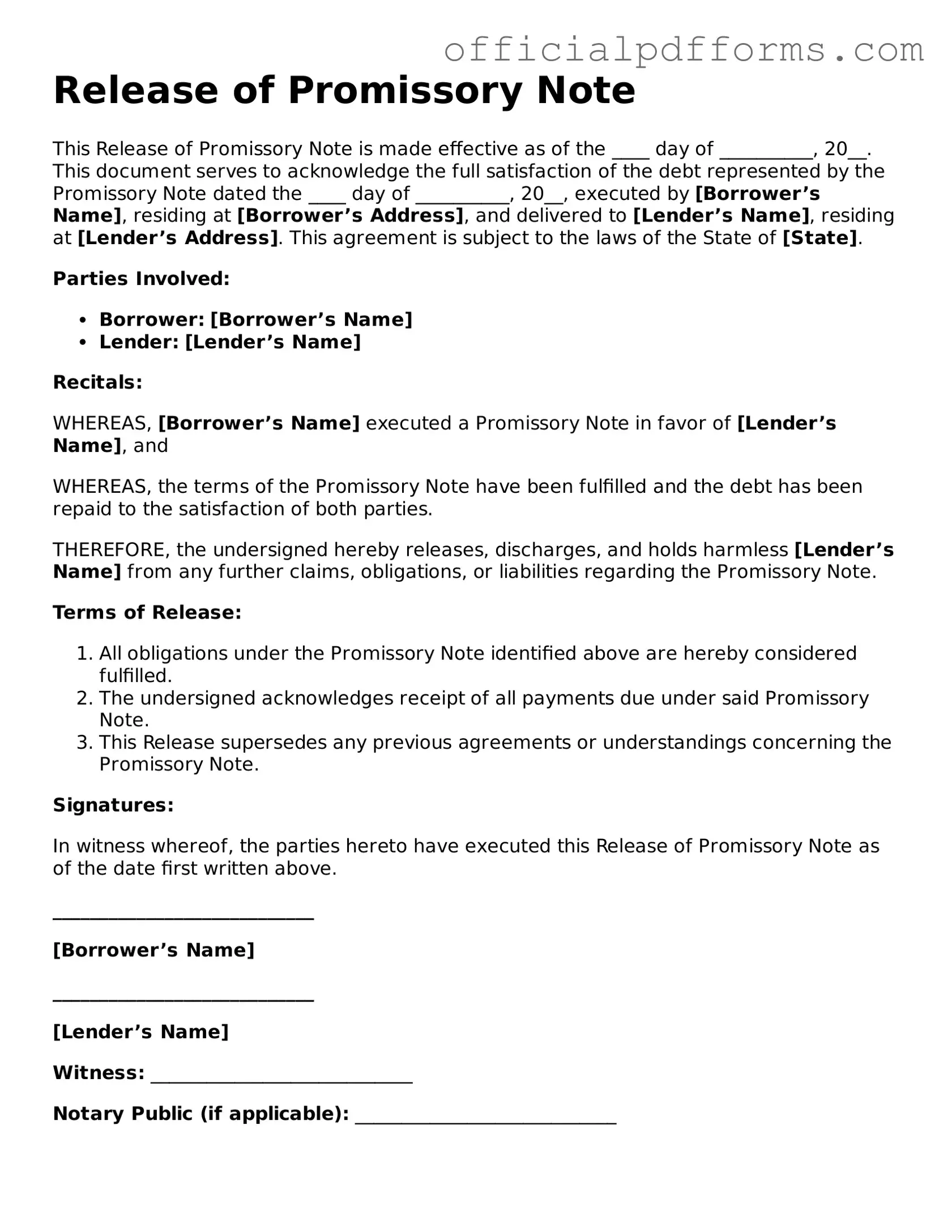The Release of Promissory Note form is a legal document that signifies the cancellation of a promissory note. When the borrower pays off their debt, this form is used to officially release them from the obligation of the note. It acts as proof that the debt has been satisfied and the lender no longer has any claim to the amount specified in the note.
You should use the Release of Promissory Note form after the borrower has fully repaid the loan outlined in the promissory note. It is important to document this release to avoid any future disputes regarding the debt. This form should be completed and signed by the lender, acknowledging that the borrower has fulfilled their obligations.
The form must be signed by the lender, who is the party that originally provided the loan. If there are multiple lenders or co-signers, they may also need to sign the form to ensure all parties agree to the release. The borrower should also receive a copy for their records.
The Release of Promissory Note form typically requires the following information:
-
The names and addresses of both the lender and borrower.
-
The date the promissory note was signed.
-
The amount of the original loan.
-
The date the loan was paid in full.
-
A statement confirming that the debt has been satisfied.
While notarization is not always required, it is often recommended. Having the form notarized adds an extra layer of authenticity and can help prevent any disputes in the future. Check your state’s requirements, as they may vary.
If you do not use the Release of Promissory Note form after the debt is paid, the lender may still appear to have a claim on the borrower’s obligation. This could lead to misunderstandings or disputes down the line. It is always best to document the release to protect both parties.
The Release of Promissory Note form is specifically designed for promissory notes. If the loan is secured by collateral or is a different type of agreement, other forms may be necessary. Always ensure that you are using the correct documentation for your specific situation.
